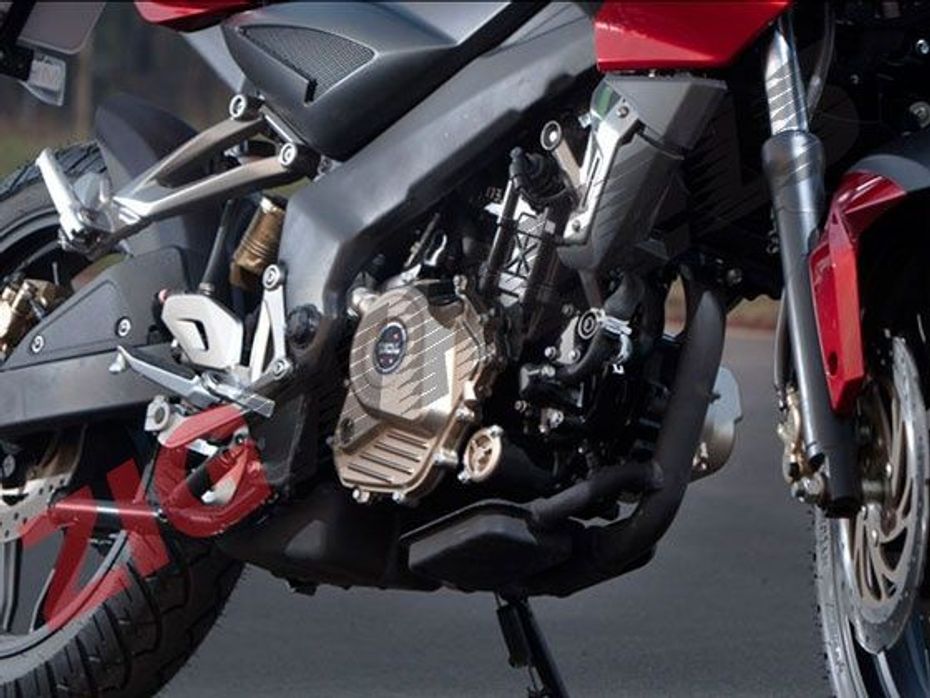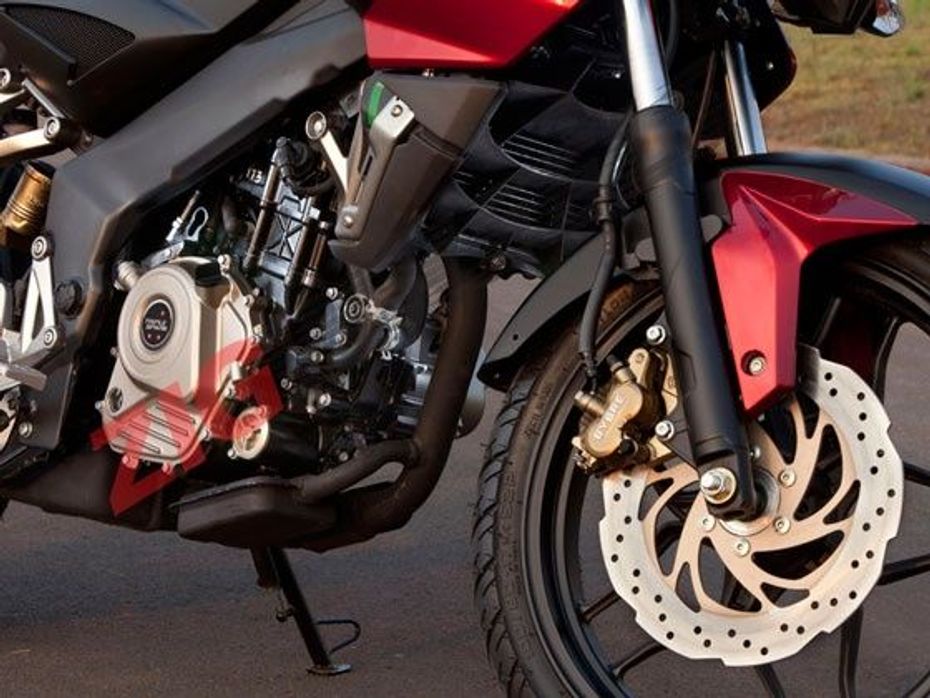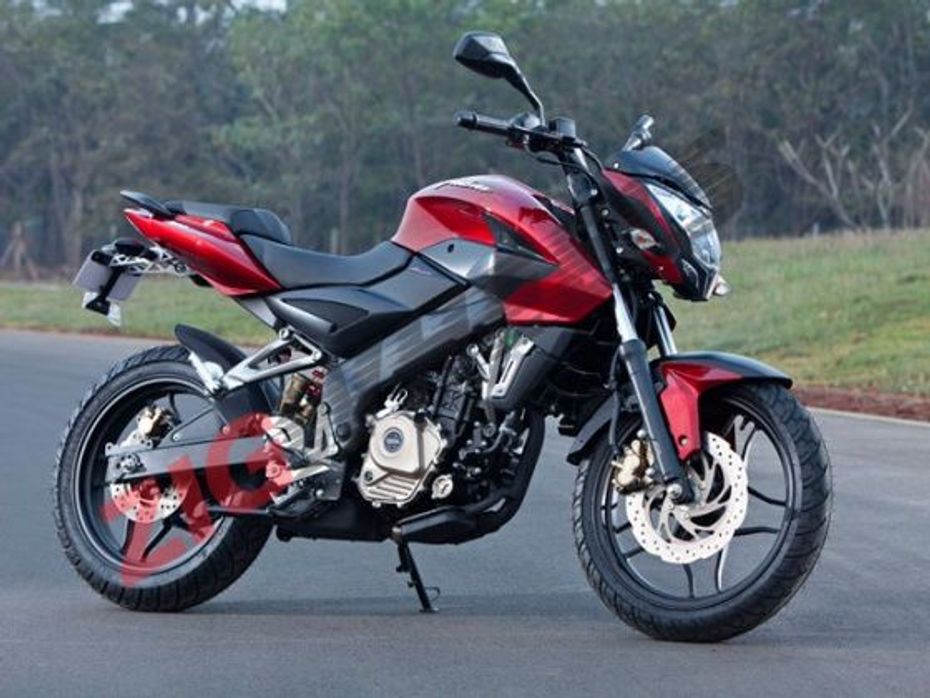
2025 Bajaj Pulsar RS200; Launch In Next Few Days
- Jan 6, 2025
- Views : 4491


How many times has it been said that the heart of a Ferrari is its engine and just as many times it has been mentioned that if one had to denote the signature Ferrari engine it had to be a V12. Maybe this sort of a geneology could also be applied to the Pulsar because the DNA of this brand is its engine technology – homespun tech that has proved itself in the art of making power and delivering efficiency without being harmful to the environment. The DTSi twin spark digital ignition technology came up through the simple expedient which has remained a Joseph Abraham hallmark to this very day: initiate complete and total combustion as quickly as possible so that no unburnt fuel goes out as harmful tailpipe effluents while power and torque are high without the need to drink more fuel. If that’s not all the obvious benefits to this approach mean not much is needed by way of exhaust after treatment and also the fact that the engine operates at a higher efficiency always.
This is the sort of approach that is carried on in the new motor as well but one that has now been taken to newer heights with the employment of what is indeed the world’s first ever three-spark plug head on a single cylinder motorcycle engine! Again let us not be so simplistic as that in just sticking up three sparklers and hoping it will take care of everything else. There is method in the madness and also another way as to the differentiation of the design and character that Joseph and his team have adopted when configuring the engines for the KTM Duke 200 and the Pulsar 200 NS. While the former is a double overhead cam unit operating four valves, the latter is also a four-valve head but a single overhead cam unit actuates these four valves. The engine is liquid cooled, a first for a homegrown machine and one which is compact, high tech, has all the robustness of design and build to benefit from the new combustion technology perfected with the three-spark plug head.

First off let us clearly outline the fact that the bottom end and the reciprocating mass comprising of crankshaft, connecting rod and piston of both the Duke 200 and the Pulsar 200 NS are common. The bore and stroke of both bikes measures 72mm x 49mm making for a 199.5cc swept volume. Apart from that, everything is different and the top end is key to the new Pulsar mill. What Bajaj learnt from the DTSi success was that the people didn’t know much what it stood for but knew it helped deliver power and efficiency so in the new Pulsar 200 NS they decided to skip the techno babble and go straight to the point and term the new top end as the one encompassing the Triple Spark technology.
Again unlike the Duke 200 which runs fuel injection with a large 38mm venture throttle body, Joseph adopted a 33mm venture Ucal carburetor which helps give consistent fuel metering and also with the superbly configured pent roof combustion chamber and slight squish bands designed in, the Triple Spark layout employs a central master plug and two slave plugs on either side. A completely independent mapping system is wrought into the ignition that works on its own using Bajaj Auto’s very own proprietary algorithms to help the flame front propagate completely all over the combustion chamber. Nothing has been left to chance and while earlier Pulsars with the DTSi tech did produce a pronounced engine knock on the top end (happens always when rapid combusting is called for), this time the combustion is even more rapid but the knock is all but eliminated thanks to the water jacket helping to muffle the sound.
Go back to our Special Coverage. Also read the First Ride of the new Bajaj Pulsar 200NS here.
Slideshow:

We asked Joseph to outline exactly why and how the triple spark plug does its bit and this is it, in his own words: “The Pulsar has an over-square engine configuration and if we were to do a typical DTSi type of application, as there is on the P135 for example, we would have two plugs on the sides and we would have ended up with a situation where the middle part of the combustion chamber, an area which contains a lot of volume, would still not have a combustion initiation point available there. On the other hand, if we were to do only a single plug in the middle, we would have a situation where the flame front, although in the middle had to travel far to propagate all over the place trying to combust equally and efficiently all across the combustion chamber. We knew that something special was called for because we had to take it to the next level, in terms of a high performance engine.
And the entire challenge lay in how to make a water core and three plugs and four valves to be packaged in the tight top end and also make the whole package operate in most cost effective manner. SOHC made sense, not just from the cost perspective but also the packaging and the manufacturing of the complete assembly. The compacted cam helps allow the main central spark plug and these with the two slave units on either side all combine well with the flame fronts from each interacting to create a pressure change which helps accelerate the combustion process. It is this which helps give us a huge gain, over the DTSi in the combustion speeds.”
The liquid cooling also helped deliver the right consistent engine operating temperature for a four-stroke to thrive in our environment and this has helped greatly to the performance and efficiency aspects of the new machine. If that wasn’t all, the new motor features an iteration of another Pulsar technology and that is a new form of the patented ExhasTEC system. Having said that Joseph is fanatically aligned to making for clean combustion without having to rely on after treatments, the Pulsar 200 NS incorporates a tiny catalytic convertor way high in the bent tube whereas the KTM relies on a very sizeable cat con.

Another aspect where the engine shows even more modern thought is in the design of the balancer shaft, which operates between the crank throws and is a compact unit that also drives the water pump. And to further round off the compact bit, the new Pulsar 200 NS incorporates a six-speed gearbox which measures just 2 millimetres more in the overall transmission length including the clutch against the five-speed tranny in the previous Pulsar! Everything on the new Pulsar’s transmission is different and even better sorted out – clutch, cogs, shifter cams, the works!
So what does she do for the number crunchers in the sportily inclined among the enthusiast biker breed? Well let’s first take a look at the figures dished out by the KTM Duke 200’s motor that produces 25.0 PS at 10,000 rpm and 19Nm of torque at 8000rpm. The Pulsar 200 NS comes in with 23.52PS on tap at 9500 rpm and makes 18.3Nm of torque at 8000 rpm. If that is not all, the Pulsar 220 in the IDC was rated at about 38kmpl while the new 200 NS is rated at 54kmpl. With a lesser displacement the new bike is more powerful while also being more efficient and also of course with a much cleaner tail pipe. If that is not called upping the game then maybe one needs to go get a reality check!
ENGINE: 5/5
TRANSMISSION: 5/5
Slideshow:

2025 Bajaj Pulsar RS200; Launch In Next Few Days

New Bajaj Pulsar Teased; Launch Likely In January 2025

Upcoming 2025 Bajaj Pulsar RS200 Teased Again

2025 Bajaj Pulsar RS200 Spied Testing Before Launch

BREAKING: 2025 Bajaj Pulsar RS200 Launched In India

Upcoming Bajaj Pulsar RS200: Check Out This New Feature And Design...

New Bajaj Chetak to Launch on 20th December

2025 Bajaj Pulsar N160 Single Seat Variant Launched

Bajaj Bikes Expected At The Auto Expo 2025

The 2025 Ather 450 Put Through An Insane Track Attack Challenge...
India's largest automotive community
 Ultraviolette F77 SuperStreet
Rs. 2.99 Lakh
Ultraviolette F77 SuperStreet
Rs. 2.99 Lakh
 Ola S1 Pro Plus
Rs. 1.54 Lakh
Ola S1 Pro Plus
Rs. 1.54 Lakh
 Ola S1 Pro
Rs. 1.14 Lakh
Ola S1 Pro
Rs. 1.14 Lakh
 Ola S1 X Plus
Rs. 1.07 Lakh
Ola S1 X Plus
Rs. 1.07 Lakh
 Ola S1 X
Rs. 79,999
Ola S1 X
Rs. 79,999